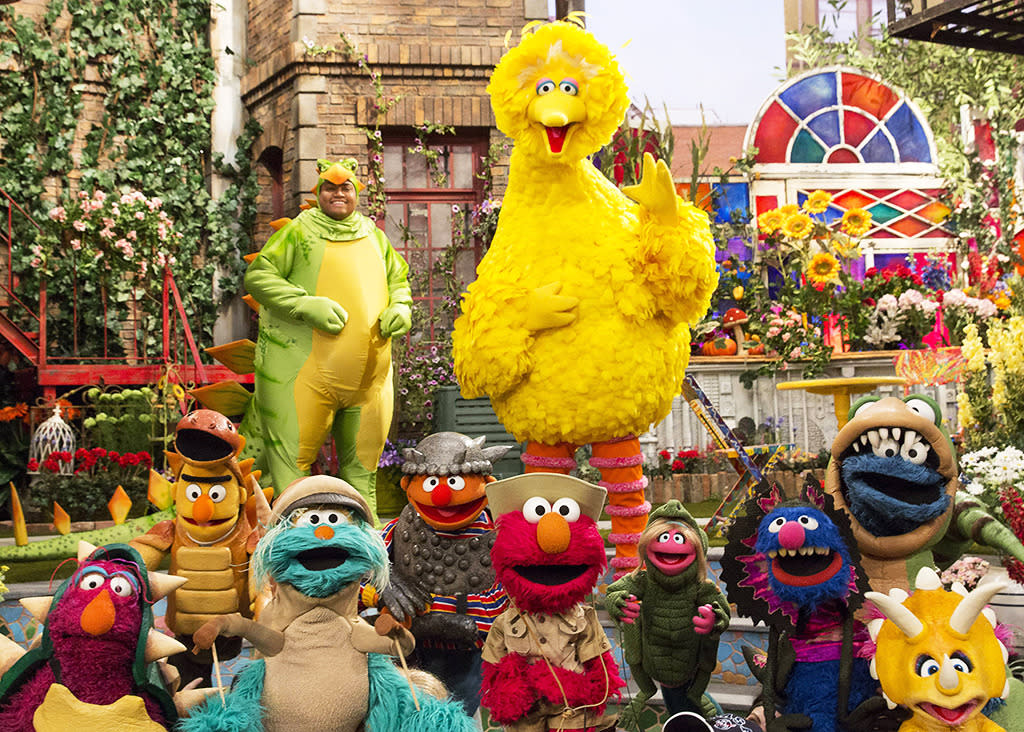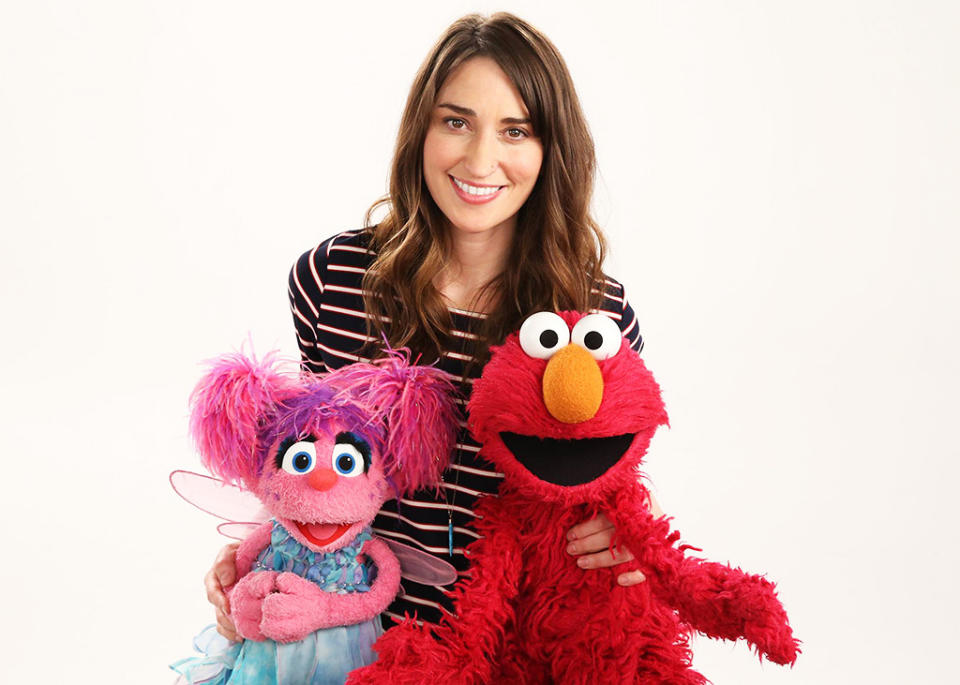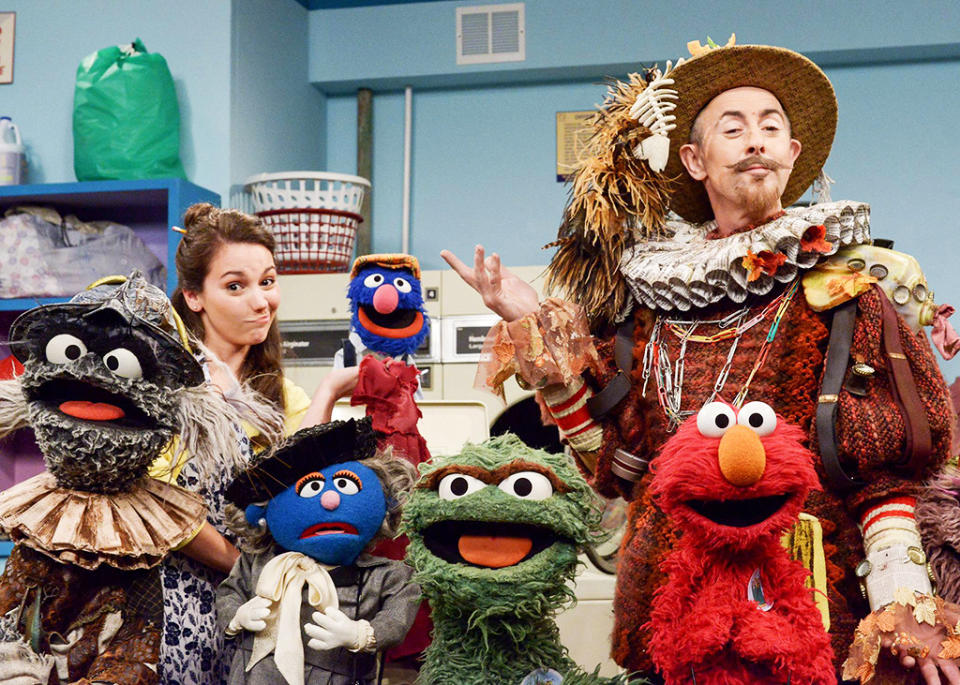'Sesame Street' on HBO: 5 Ways the Show is Different

After 45 years on public television, the citizens of Sesame Street have moved to new digs: That lavish pay cable cul-des-sac known as HBO. Of course, whenever you switch addresses, some things inevitably get lost in the transition from one home to another. So when you sit down with your kids to watch the season premiere of Sesame Street on Jan. 16, you’ll notice that things seem a little different around the ol’ neighborhood. Don’t worry: it’s not like Sesame Street is suddenly awash in the kind of rampant nudity and copious bloodshed glimpsed on the network’s big hit, Game of Thrones. But several tweaks to the format have resulted in a show that’s not exactly your parents’ (or, for that matter, your grandparents’) Sesame Street. Here are five examples of the changes that have accompanied the network switch, based on the first two episodes of the new season.

Mo’ Elmo, Mo’ Abby, MIA Bert and Ernie
The benign despot of Sesame Street has lorded over the series for years, delighting fresh generations of children even as he infuriates adults. And Elmo’s presence hasn’t diminished now that the series is on HBO. If anything, he’s more omnipresent than ever, appearing in the first and last segment of each episode, plus pretty much every other sketch in between. The season premiere opens with Elmo and Abby — whose screentime has also been substantially increased, as per previously-announced plans — getting a crash course in how to go to bed properly courtesy of new human cast member, Nina (Suki Lopez), while the second episode finds Elmo joining so-called “grouch explorer” Mucko Polo (The Good Wife’s Alan Cumming) on a trip around the neighborhood, using his five senses to uncover the few yucky things on this otherwise bucolic street. Also — be warned, parents — “Elmo’s World” is still very much a thing, capping off the first episode with a trip into the furry toddler’s crayon-colored existence.
With all that Elmo-time, the other characters can’t help but get lost in the shuffle. Although Cookie Monster, Grover and Oscar all have featured moments, Big Bird sightings are few and far between in the first two episodes, and the dynamic duo of Bert & Ernie are only glimpsed in group shots. Meanwhile, poor Murray Monster has seen his “Word on the Street” segment completely cut, after already losing “Word of the Day” duties to Elmo last season. At least the Count still gets to handle “Number of the Day” duties, but the dude had better watch his back, because Elmo might be planning to make sure that his days are…ahem, numbered.
A New Beginning…And Ending
There’s a fresh musical beat to Sesame Street. The opening credits have been overhauled, with a new title sequence that sports a lively rendition of the classic “Can You Tell Me How to Get to Sesame Street” tune, and makes creative use of slow-motion effects. The closing credits have been revised as well, with Elmo and friends bidding goodbye to kids by encouraging them to “Move your body and use your mind, because you know you are growing all the time!” Thanks for reminding us that our adorable toddlers are gonna be sullen teens before we know it, dude.
No ‘70s and ‘80s Flashbacks
In order to fill PBS’s hour-long blocks, Sesame Street would often have to pad episodes out with recycled material in addition to newly-filmed sequences. That’s why you’d sometimes get jarring cuts from a modern-day segment to blast-from-the-past pieces of animation or a vintage Bert and Ernie argument. Since the HBO episodes are only 30 minutes, there’s no need for that padding — it’s all-new material, all the time. (The network’s advertisements have noted that “classic” episodes will also be available separately.) While that allows for more efficient episodes, it’s hard not to feel just a little bit sad about knowing you won’t suddenly get to rewatch a Sesame Street from your childhood while sitting next to your child.
Streamlined Learning
The first two episodes of Sesame Street establish a clear structural pattern that lets kids know exactly what to expect and when. There’s the pre-credits sequence establishing the episode’s central lesson, followed by a roughly 10-minute Elmo-centric segment, the “Letter of the Day” video and a letter-related skit, the “Number of the Day” video, another segment and, finally, an episode of “Elmo’s World” or another Elmo-related adventure. That again speaks to the focus that comes with a reduced runtime; the hour-long PBS episodes have the leeway to sometimes meander away from the organizational throughline. This new version more closely resembles a half-hour pre-school session, with a set of consistent activities to allow for more closely guided learning.

Fewer Parodies
You know those Sesame Street parodies of shows like House of Cards and Mad Men that are always going viral on Facebook? Well, don’t hold your breath for a spoof of, say, Scream Queens anytime soon. Not because the writers couldn’t pull it off — if they can do a G-rated Game of Thrones spoof, they can pretty much spoof anything — but because the show’s creative team has already said that they’ll be dialing back on the pop culture gags this year, in lieu of the fact that those jokes are directed at parents rather than kids…and fewer parents are watching these days. As promised, the first two episodes are parody and pop culture free, though grown-up viewers can still look forward to seeing celebrities like Cumming and black-ish star Tracee Ellis Ross enjoying some playtime with the Sesame Street crew.
Sesame Street premieres on Jan. 16 at 9 a.m. on HBO


